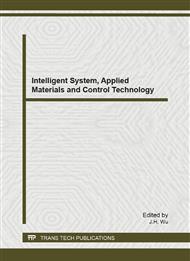[1]
R. Tel-Vered, D.A. Walsh, M.A. Mehrgardi and A.J. Bard: Analytical chemistry Vol. 78 (2006), p.6959.
Google Scholar
[2]
X. Liu, W. Ji, Y. Zhang, Y. Yang and B. Xu: Carbon Vol. 46 (2008), p.154.
Google Scholar
[3]
G. Wei, H. Saitoh, K. Fujiki, T. Yamauchi and N. Tsubokawa: Polymer Bulletin Vol. 60 (2008), p.219.
Google Scholar
[4]
M.S. Wu, J.T. Lee, P.C.J. Chiang and J.C. Lin: J. Mater. Sci. Vol. 42 (2006), p.259.
Google Scholar
[5]
M.H. Al-Saleh and U. Sundararaj: Carbon Vol. 47 (2009), p.2.
Google Scholar
[6]
G. Sui, B. Li, G. Bratzel, L. Baker, W.H. Zhong and X.P. Yang: Soft Matter Vol. 5 (2009), p.3593.
Google Scholar
[7]
G. Li, T. Xie, S. Yang, J. Jin and J. Jiang: J. Phys. Chem. C. Vol. 116 (2012), p.9196.
Google Scholar
[8]
N. Tang, Y. Yang, K. Lin, W. Zhong, C. Au and Y. Du: J. Phys. Chem. C. Vol. 112 (2008), p.10061.
Google Scholar
[9]
M.K. van der Lee, A.J. van Dillen, J.W. Geus, K.P. de Jong and J.H. Bitter: Carbon Vol. 44 (2006), p.629.
DOI: 10.1016/j.carbon.2005.09.031
Google Scholar
[10]
T. Song, D.H. Lee, M.S. Kwon, J.M. Choi, H. Han, S.G. Doo, H. Chang, W. Park, W. Sigmund, H. Kim and U. Paik: J. Mater. Chem. Vol. 21 (2011), p.12619.
DOI: 10.1039/c1jm12511g
Google Scholar
[11]
W.L. Yao, J.Q. Chen and H.W. Cheng: J. Solid State Electrochem. Vol. 15 (2011), p.183.
Google Scholar
[12]
X.Y. Tao, X.B. Zhang, L. Zhang, J.P. Cheng, F. Liu, J.H. Luo, Z.Q. Luo and H.J. Geise: Carbon Vol. 44 (2006), p.1425.
Google Scholar
[13]
X. Lu, J. Zhou, W. Lu, Q. Liu and J. Li: Biosens. Bioelectron. Vol. 23 (2008), p.1236.
Google Scholar
[14]
J. Wang and Y.H. Lin: Trac – Trends Anal. Chem. Vol. 27 (2008), p.619.
Google Scholar
[15]
Y. Qin, Y. Zhang and X. Sun: Microchimica Acta. Vol. 164 (2008), p.425.
Google Scholar
[16]
Q. Zhang and Z.L. Cui: Journal of Functional Materials (In Chinese) Vol. 39 (2008), p.151.
Google Scholar
[17]
X. Tao, X. Zhang, J. Cheng, F. Liu, J. Luo and Z. Luo: Chemical Vapor Deposition Vol. 12 (2006), p.353.
Google Scholar
[18]
Y.F. Shi, H.J. Quan, G.B. Zheng, H. Sano and Y. Uchiyama: J. Mater. Sci. Vol. 39 (2004), p.1495.
Google Scholar
[19]
C. P. Deck and K. Vecchio: Carbon Vol. 44 (2006), p.267.
Google Scholar
[20]
J. Li, C. Papadopoulos and J. Xu: Nature (London) Vol. 402 (1999), p.253.
Google Scholar
[21]
D.Y. Ding, J.N. Wang, F. Yu and L.F. Su: Appl. Phys. A-Mater. Vol. 81 (2005), p.805.
Google Scholar
[22]
Q. Liu, W. Liu, Z.M. Cui, W.G. Song and L.J. Wan: Carbon Vol. 45 (2007), p.268.
Google Scholar
[23]
C. Luo, L. Liu, K. Jiang, L. Zhang, Q. Li and S. Fan: Carbon Vol. 46 (2008), p.440.
Google Scholar


